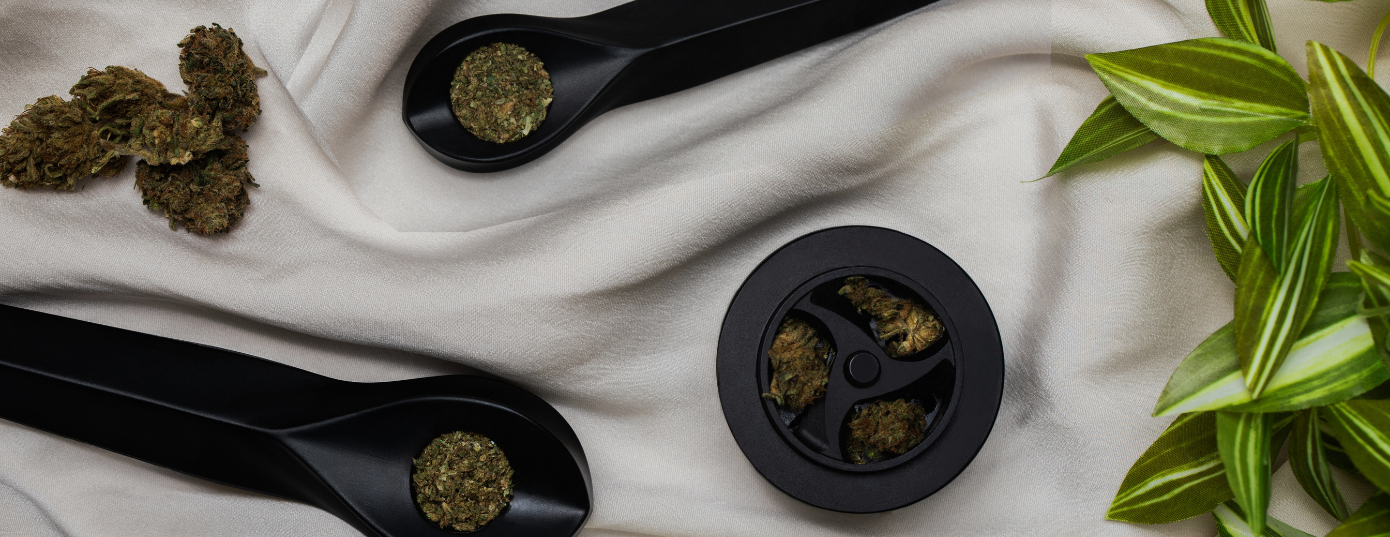The worldwide restriction of marijuana has led humans to ignore the wonderful benefits that cannabis has to offer. As the world leaders rethink the many uses of this plant, scientists have started to conduct even more research about their medical and recreational use. Now, they’re finding evidence that could provide us all with incredible alternatives to medicine as we know it.
This has given a spotlight to the ongoing debate about legalizing cannabis. While some countries are starting to legalize it, there seems to be a pattern; governments will usually pass laws for the medical use of cannabis, while its recreational use will stay on hold for a while. Even laws about selling and purchasing marijuana have been pushed back due to its complex nature, but that’s a whole other subject.
Let us dive into the benefits of cannabis, its uses, and the debate surrounding the flowering plant.
Medical Marijuana vs. Recreational Marijuana
As their names state, medical marijuana is used for medicinal purposes only, and recreational cannabis is used mainly for leisure.
Every country carries out its laws differently, but we’ll use the United States as an example. In the US, patients who have the permission to own legal possession and use of medical marijuana for a variety of medical conditions will get cannabis from a medical dispensary. Purchases are limited to those with medical marijuana cards, so consumers must have proof of legal possession and medical use before purchasing it.
BianchiBrandt states that the fundamental differences when comparing medical vs. recreational are a variety of characteristics such as potency, age, purchase, possession quantities, taxation rates, and the legal number of plants allowed for cultivation.
Medical and Recreational: The Key Differences
AgeMedical Marijuana: Available to patients who are 18 years or older.
Recreational Marijuana: At least 21 years old to visit a recreational dispensary in a state where recreational cannabis is legal.
CultivationMedical: Allowed to grow plants at their homes if they live further than 25 miles from a medical dispensary; the number may vary from state to state.
Recreational: Can be grown by people who are at least 21 years of age, but no more than six plants are permitted per individual residence; again, the number may vary from state to state.
PotencyMedical: Can be purchased with higher THC concentrations, especially for those who need help easing symptoms of chronic health issues.
Recreational: Consumers are often limited; for example, edibles limit up to 10 mg of THC per serving and 100 mg per package. Note that the numbers vary from state to state.
Purchase
Medical: Purchasing will have a time and quantity limit; for example, in Arizona, a patient can purchase up to two and a half ounces every two weeks. They must not exceed 10 ounces a month.
Recreational: Purchasing has a quantity limit, like up to one ounce, with no more than five grams being concentrates or extracts.
TaxesMedical: You’ll be pleased to know that most states tax medical marijuana at a minimal level.
Recreational: States that allow recreational cannabis will tax the product by 20-35 percent or even more.
A List of Studies About the Benefits of Cannabis
The potential benefits of medical and recreational marijuana have become quite a popular research subject. Universities such as JWU have incorporated a Cannabis Entrepreneurship B.S. into their programs, which focuses on learning about the booming business of the legal cannabis trade.
Here are some fascinating discoveries that have been researched from 2012 until now:
Fighting cancerYes, you read that right. CBD and even THC have been known to ease chemotherapy's effects, such as improving the loss of appetite in patients undergoing that procedure.
BMC complementary and alternative medicine discovered that cannabis could prevent cell growth and induce cell death in cervical cancer cell lines. Alternatively, cannabis could potentially be used to avoid cancer and treat tumors.
Lowering blood pressure
A study conducted by the peer-reviewed journal dedicated to biomedical research known as the JCI found back in 2017 that a single dose of cannabidiol reduces the blood pressure of human participants.
Potentially preventing relapse in drug and alcohol addiction.
A study in 2018 published by the American College of Neuropsychopharmacology uncovered that CBD reduces the stress-induced cravings, anxiety, and lack of impulse control of people recovering from other drug addictions.
Preventing seizures
Researchers have spent over a decade studying the effectiveness of CBD in treating epilepsy and other diseases that have seizure syndrome. Two years ago, the Neuropsychiatric disease and treatment updated the current status and future prospects of cannabinoids in the treatment of epilepsy, finding positive results in reducing symptoms and frequency of seizures.
Reducing inflammation
In 2012, the Rockefeller Institute of Medical Research discovered that cannabinoids suppress inflammatory and neuropathic pain it can cause in the body.
Treating anxiety disorders and depression
It’s commonly known that CBD reduces anxiety. Back in 2015, a Neurotherapeutics study confirmed that cannabidiol works as a potential treatment for anxiety disorders, such as panic, obsessive-compulsive disorder, and post-traumatic stress.
Treating chronic pain
The National Academies of Sciences, Engineering, and Medicine found substantial evidence that cannabis is effective for treating chronic pain in adults and moderate evidence about short-term sleep disturbances in chronic pain.
The 2018 study discovered that inhaled cannabis has benefits for conditions such as human immunodeficiency virus (HIV), diabetic neuropathy, complex regional pain syndrome, spinal cord injury, traumatic neuropathic pain, multiple sclerosis, and many others.
Treating gastrointestinal disorders
CBD has been praised for its anti-inflammatory properties. It’s no surprise that the Intentional Journal of Molecular Sciences published a study about cannabinoids and their effectiveness in treating and preventing disorders like irritable bowel syndrome, inflammatory bowel disease (IBD), ulcerative colitis, and more.
Other Benefits of Cannabis
In an article about the Benefits and Harms of Marijuana, Vox notes that marijuana is often described as one of the safest drugs to be found out there. In part, this is because it’s never been definitively linked to an overdose death, and it’s broadly safer than other drugs like alcohol, tobacco, cocaine, and heroin.
However, it has also been said that the side effects of marijuana can -and most likely- vary between people; while some could have their anxiety eased down, others could have panic crises.
It’s important to note that people may not know what effects they’ll be experiencing until after they’ve used it, but consumers have praised marijuana for benefits such as:
- Decreased nausea
- Decreased pain
- Increased appetite
- Increased dopamine
- Increased focus
- Increased serotonin
- Mental relaxation
- Muscle relaxation
The debate about the legalization of marijuana is far from over, but the good news is that research is taking a stir!
Governments passing laws leads to more studies being carried out in every country, which leads to more information for the people. Data will allow us to dive deep into the subject, to doctors presenting more options for their patients and people making better decisions for their health. Knowledge will always make us look at the two sides of the coin and allow us to choose if cannabis agrees with us, our minds, and our bodies, or if it's better to cast it aside.
Author: Mary Jane
References:
Bianchi Brandt (2021). Breakdown Of Medical Vs. Recreational Cannabis. Retrieved from https://www.bianchibrandt.com/blog/breakdown-of-medical-vs-recreational-cannabis#:~:text=Medical%20marijuana%20is%20used%20for,of%20plants%20allowed%20for%20cultivation.
Blessing, E. M., Steenkamp, M. M., Manzanares, J., & Marmar, C. R. (2015). Cannabidiol as a Potential Treatment for Anxiety Disorders. Neurotherapeutics : the journal of the American Society for Experimental NeuroTherapeutics, 12(4), 825–836. https://doi.org/10.1007/s13311-015-0387-1
Gonzalez-Cuevas, G., Martin-Fardon, R., Kerr, T. M., Stouffer, D. G., Parsons, L. H., Hammell, D. C., Banks, S. L., Stinchcomb, A. L., & Weiss, F. (2018). Unique treatment potential of cannabidiol for the prevention of relapse to drug use: preclinical proof of principle. Neuropsychopharmacology : official publication of the American College of Neuropsychopharmacology, 43(10), 2036–2045. https://doi.org/10.1038/s41386-018-0050-8
Isles, C. (2021). 7 Potential Health Benefits of Cannabis. JWU. Retrieved from, https://www.jwu.edu/news/2021/09/7-potential-health-benefits-of-cannabis.html
Jadoon, K. A., Tan, G. D., & O'Sullivan, S. E. (2017). A single dose of cannabidiol reduces blood pressure in healthy volunteers in a randomized crossover study. Retrieved https://www.ncbi.nlm.nih.gov/pmc/articles/PMC5470879/
Lopez, G. (2017). The benefits and harms of marijuana, explained by the most thorough research review yet. Vox. Retrieved from https://www.vox.com/science-and-health/2017/1/14/14263058/marijuana-benefits-harms-medical
Lukhele, S. T., & Motadi, L. R. (2016). Cannabidiol rather than Cannabis sativa extracts inhibit cell growth and induce apoptosis in cervical cancer cells. BMC complementary and alternative medicine, 16(1), 335. https://doi.org/10.1186/s12906-016-1280-0
Martínez, V., Iriondo De-Hond, A., Borrelli, F., Capasso, R., Del Castillo, M. D., & Abalo, R. (2020). Cannabidiol and Other Non-Psychoactive Cannabinoids for Prevention and Treatment of Gastrointestinal Disorders: Useful Nutraceuticals?. International journal of molecular sciences, 21(9), 3067. https://doi.org/10.3390/ijms21093067
Morano, A., Fanella, M., Albini, M., Cifelli, P., Palma, E., Giallonardo, A. T., & Di Bonaventura, C. (2020). Cannabinoids in the Treatment of Epilepsy: Current Status and Future Prospects. Neuropsychiatric disease and treatment, 16, 381–396. https://doi.org/10.2147/NDT.S20378
Romero-Sandoval, E.A., Fincham, J.E., Kolano, A.L., Sharpe, B.N. and Alvarado-Vázquez, P.A. (2018), Cannabis for Chronic Pain: Challenges and Considerations. Pharmacotherapy, 38: 651-662. https://doi.org/10.1002/phar.2115
Xiong, W., Cui, T., Cheng, K., Yang, F., Chen, S. R., Willenbring, D., Guan, Y., Pan, H. L., Ren, K., Xu, Y., & Zhang, L. (2012). Cannabinoids suppress inflammatory and neuropathic pain by targeting α3 glycine receptors. The Journal of experimental medicine, 209(6), 1121–1134. https://doi.org/10.1084/jem.20120242


0 comments